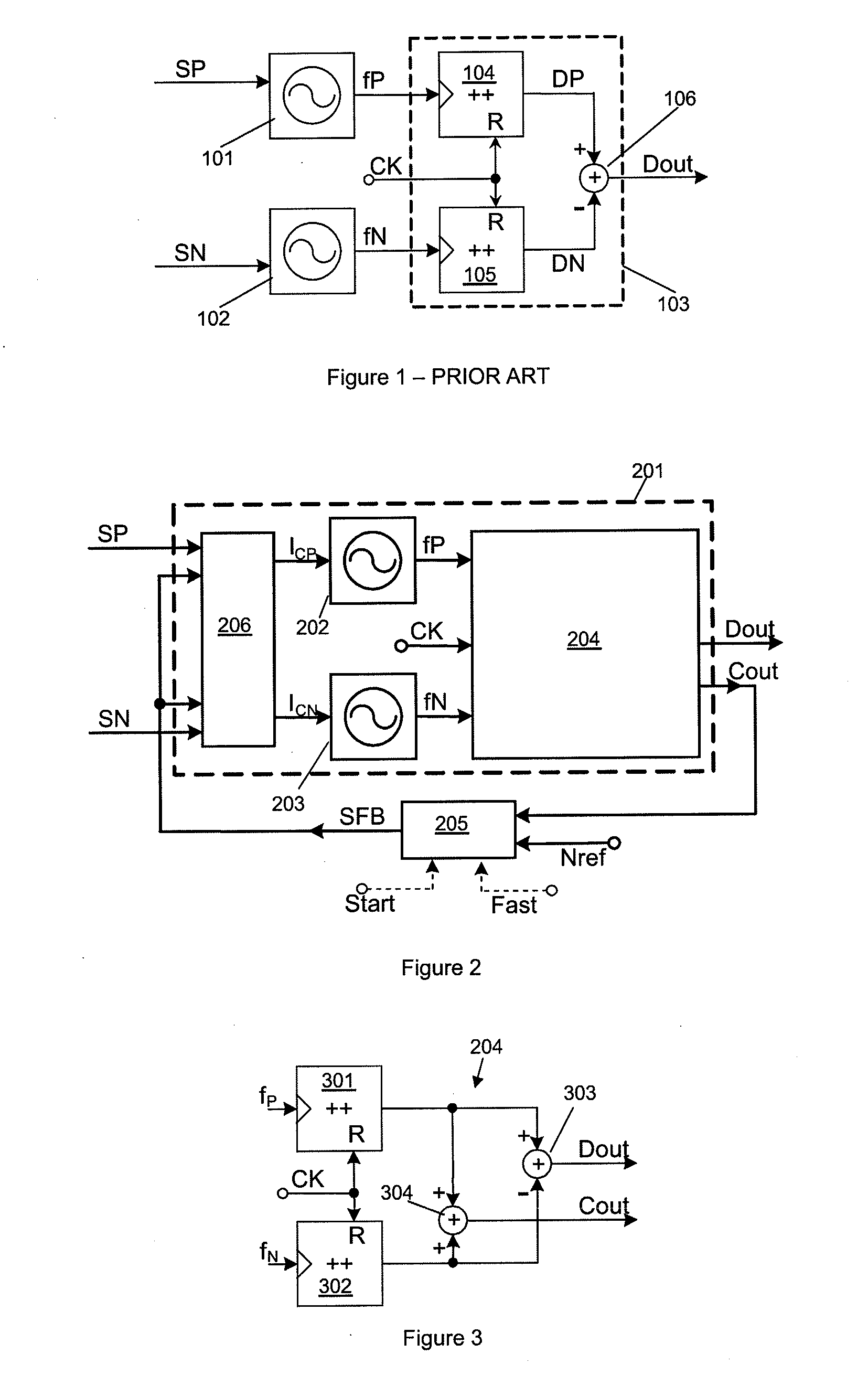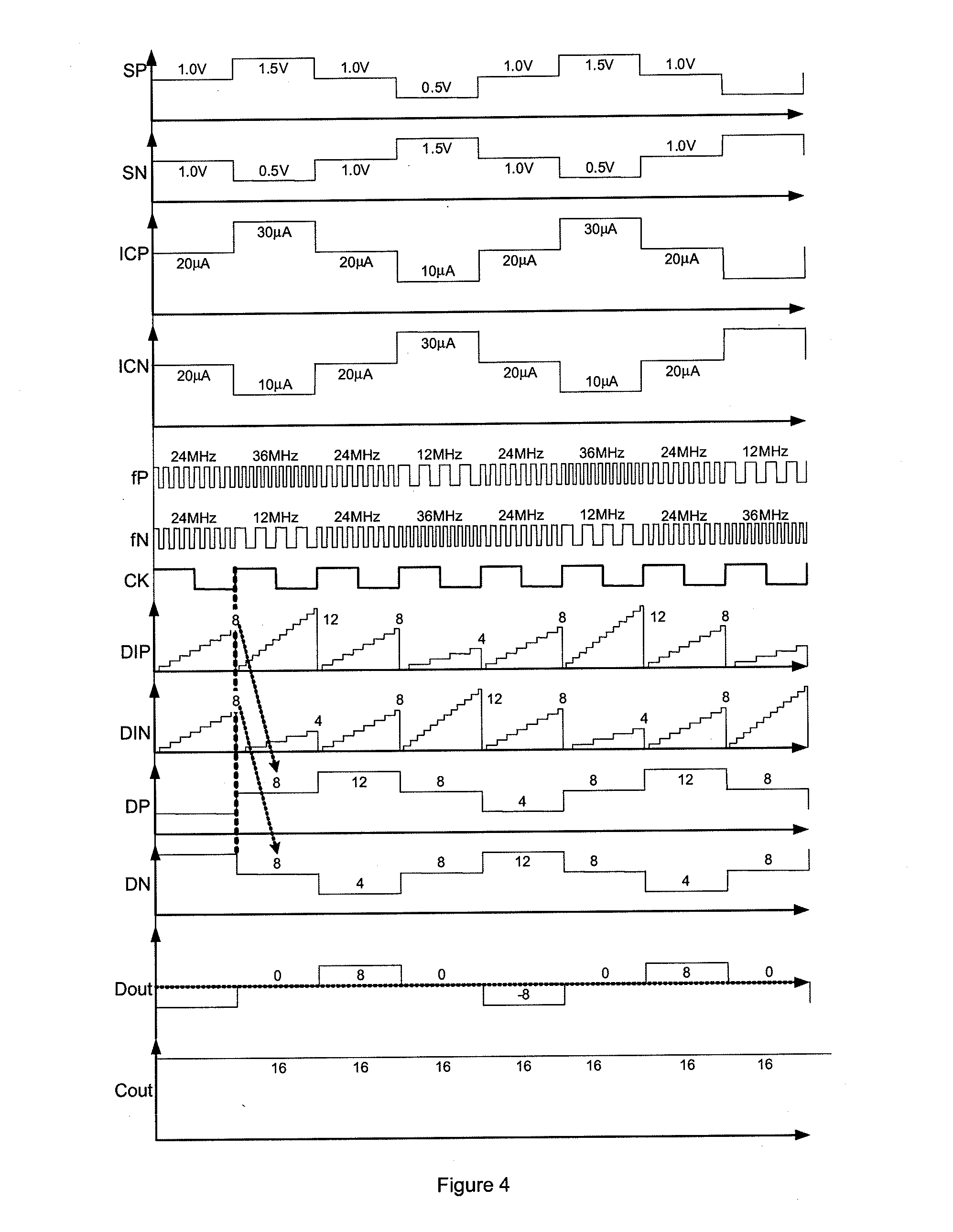Analogue-to-digital converter
a digital converter and analog technology, applied in the field of analog-to-digital converters, can solve the problems of scale factor or gain of adc, wide manufacturing tolerance of vco transfer characteristic from input voltage to output frequency, and unpredictable digital output for a given known inpu
- Summary
- Abstract
- Description
- Claims
- Application Information
AI Technical Summary
Benefits of technology
Problems solved by technology
Method used
Image
Examples
Embodiment Construction
[0089]Embodiments of the present invention provide analogue-to-digital converters (ADCs) for receiving first and second input analogue signals, with controlled oscillator circuitry for generating first and second pulse streams with pulse rates dependent on the first and second input signals respectively and difference circuitry for generating a first digital signal based on the difference in number of pulses of the first and second pulse streams.
[0090]As described above, for known VCO based ADCs such as shown in FIG. 1, a variation in transfer characteristic of the VCO can lead to an unpredictable and varying digital output. As described earlier a first digital signal, Dout, is based on the difference of the number of pulses in the first and second pulse streams in a given count period. In some embodiments the first digital signal Dout may be used directly as the output of the ADC whereas in other embodiments there may be some processing or remodulation of the first digital signal b...
PUM
 Login to View More
Login to View More Abstract
Description
Claims
Application Information
 Login to View More
Login to View More - R&D
- Intellectual Property
- Life Sciences
- Materials
- Tech Scout
- Unparalleled Data Quality
- Higher Quality Content
- 60% Fewer Hallucinations
Browse by: Latest US Patents, China's latest patents, Technical Efficacy Thesaurus, Application Domain, Technology Topic, Popular Technical Reports.
© 2025 PatSnap. All rights reserved.Legal|Privacy policy|Modern Slavery Act Transparency Statement|Sitemap|About US| Contact US: help@patsnap.com



